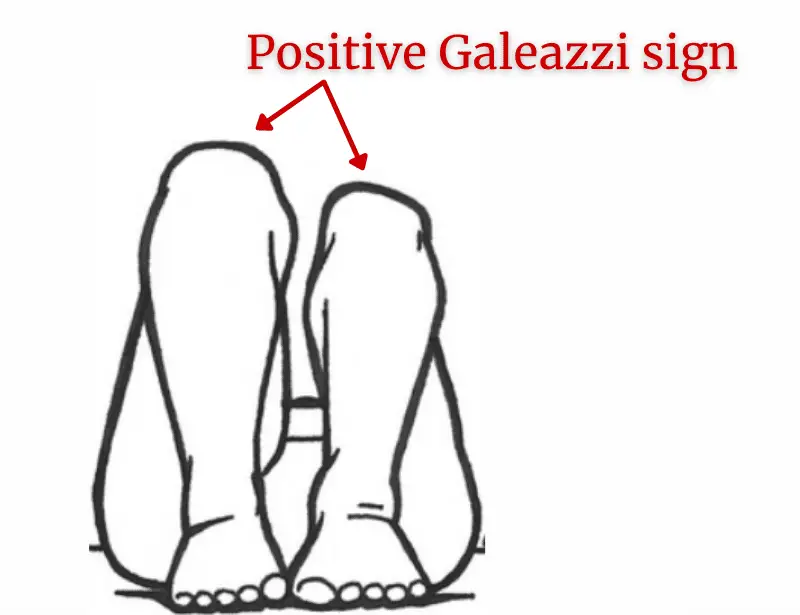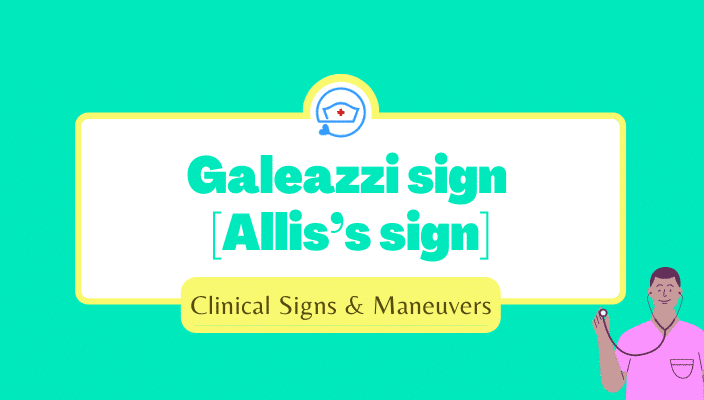Galeazzi sign [Allis’s sign]
Galeazzi sign is a clinical sign that assesses congenital hip dislocation in children and infants.
The Galeazzi sign is named after an Italian Orthopedic Surgeon, Dr.Riccardo Galeazzi (1866-1952).
Allis’s sign is another similar sign performed in the same manner to assess the fracture of the neck of the femur.
Allis’s sign is named after Oscar Huntington Allis (1836-1931), an American surgeon.

Technique for Galeazzi sign [Allis’ sign]
To assess Galeazzi sign [Allis’s sign]:
- Keep the patient in supine position on a flat surface,
- Then align the hip and bend both the knees to 90 degrees, while keeping both the feet together and sole rested on the examination table.
- Now, look for height of the knees and position and shape of the feet.
- If both the knees are the same height; it means a negative Galeazzi sign.
- If the knees are at different heights; it means a positive Galeazzi sign. A positive Galeazzi sign is an indication of congenital hip problem.
- A is when
- If you observed a relaxation of the fascia lying between the greater trochanter muscle and the crest of the ilium suggests positive Allis’s sign (i.e. a fracture of the neck of the femur).
Reference
White, F. (2009). Physical signs in medicine and surgery. Museum Press.Wilson, S., & Giddens, J. (2012). Health Assessment for Nursing Practice. Elsevier Health Sciences.




